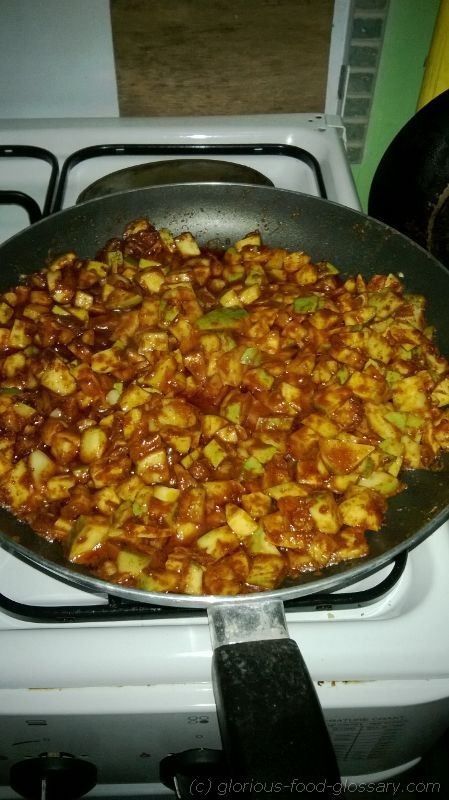Glossary K
The food glossary +++ Popular Articles: 'Kamias', 'Kinchay', 'Kodubale'
Kadalamavu, also known as "gram flour" or "chickpea flour," is a versatile ingredient widely used in various culinary traditions around the world. Derived from ground chickpeas, Kadalamavu boasts a nutty flavor and a rich nutritional profile. In this article, we will explore the significance of Kadalamavu, its culinary applications, potential risks associated with its consumption, historical insights, and legal considerations. We'll also touch upon similar ingredients from different cultures.
Kadipatha is a Hindi word for "curry leaves". It is also known as small leaves which a bit like bay leaves.
Kadu Manga/Kadumanga Achar/Achaar is the Malayalam term for mango pickles made with cubes of fresh, tender, unripe mangoes made into a pickle by cooking the mangoes with lots of spices, such as Kadugu (Black Mustard seeds), red chili powder, Turmeric, Kaluva Podi ( Fenugreek powder), Kaayam Podi (Asafoetida powder), Vinegar and Curry leaves.
Kadu Manga or Kadumanga Achar is also called Manga Achar or Uppillittuthu in Malayalam, the language spoken in Kerala.
Ready-made Pickling or Pickle Powder is also available in almost foodshops in Kerala. It is made from various spices and it is only needed to be added to the food to be pickled. This is the one which was recommended to me by my family friend to cook my own pickle when I go back to Germany.

I love all pickles served to me while I was in Allepey, Kerala, but my favorite is Kadu Manga Achar. It will always bring back happy memories, since it is one foods served to me on my first lunch with my second family in Allepey.


This is my very own version of Kadu Manga Achar using the Pickle powder I brought home from Allepey, Kerala, India and the Philippines variety of Raw /green Mango.

